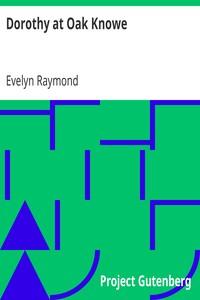Read this ebook for free! No credit card needed, absolutely nothing to pay.
Words: 4553 in 3 pages
This is an ebook sharing website. You can read the uploaded ebooks for free here. No credit cards needed, nothing to pay. If you want to own a digital copy of the ebook, or want to read offline with your favorite ebook-reader, then you can choose to buy and download the ebook.
stigation. For this new phenomenon Soddy has suggested the word isotope for the element and isotopic for the property, and these names have come into general use.
Manifestly, we have come across a phenomenon here which quite eliminates the atomic weight as a determining factor as to position in the Periodic or Natural System or of the elemental properties in general. All of the properties of the bodies which we call elements, and consequently of their compounds and hence of matter in general, seem to depend upon the balance maintained between the charges of negative and positive electricity which, according to Rutherford's theory, go to make up the atom.
It is evident that any study of chemical phenomena and chemical theory is quite incomplete without a study of radio-activity and the transformations which it produces.
Radio-activity in Nature
In concluding this outline of the main facts of radio-activity, it is of interest to discuss briefly the presence of radio-active material on this planet and in the stars. Facts enough have been gathered to show the probable universality of this phenomenon of radio-activity. Whether this means solely the disintegration of the uranium and thorium atoms, or whether other elements are also transformed under the intensity of the agencies at work in the universe, is of course a question as yet unsolved.
Radio-active Products in the Earth's Crust
The presence of uranium and thorium widely distributed throughout the crust of the earth would lead to the conclusion that their disintegration products would be found there also. Various rocks of igneous origin have been examined revealing from 4.78 x 10^ to 0.31 x 10^ grams of radium per gram of the rock. Aqueous rocks have shown a lesser amount, ranging from 2.92 x 10^ to 0.86 x 10^ grams. As the soil is formed by the decomposition of these rocks, radium is present in varying amounts in all kinds of soil.
Presence in Air and Soil Waters
As radium is transformed into the gaseous emanation, this will escape wherever the soil is not enclosed. For instance, a larger amount of radio-activity is found in the soil of caves and cellars than in open soils. If an iron pipe is sunk into a soil and the air of the soil sucked up into a large electroscope, the latter instrument will show the effect of the rays emitted and will measure the degree of activity. Also the interior of the pipe will receive a deposit of the radio-active material and will show appreciable radio-activity after being removed from the soil.
This radium emanation is dissolved in the soil waters, wells, springs, and rivers, rendering them more or less radio-active, and sometimes the muddy deposit at the bottom of a spring shows decided radio-activity.
The emanation also escapes into the air so that many observations made in various places show that the radium emanation is everywhere present in the atmosphere. Neither summer nor winter seems to affect this emanation, and it extends certainly to a height of two or three miles. Rain, falling through the air, dissolves some of the emanation, so that it may be found in freshly-fallen rain water and also in freshly-fallen snow. Radio-active deposits are found upon electrically charged wires exposed near the earth's surface.
As helium is the resulting product of the alpha particles emitted by the emanation and other radio-active bodies, it is found in the soil air, soil waters, and atmosphere.
Free books android app tbrJar TBR JAR Read Free books online gutenberg
More posts by @FreeBooks

: Pero da Covilhan: Episodio Romantico do Seculo XV by Brand O Zephyrino - Covilhã Pêro da Fiction PT Romance










